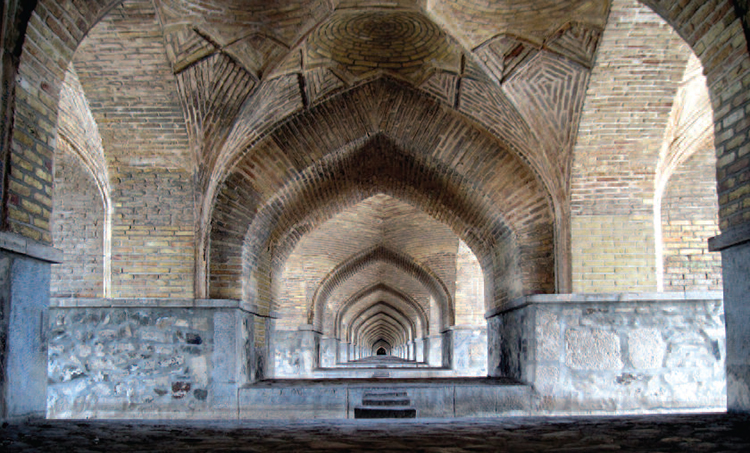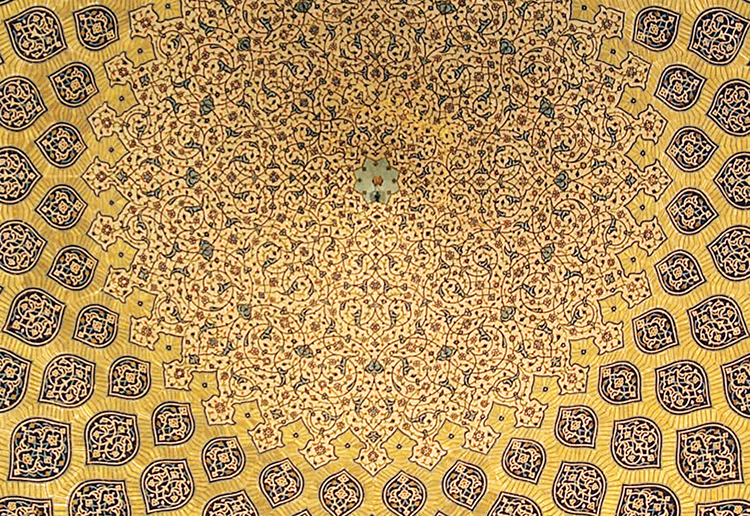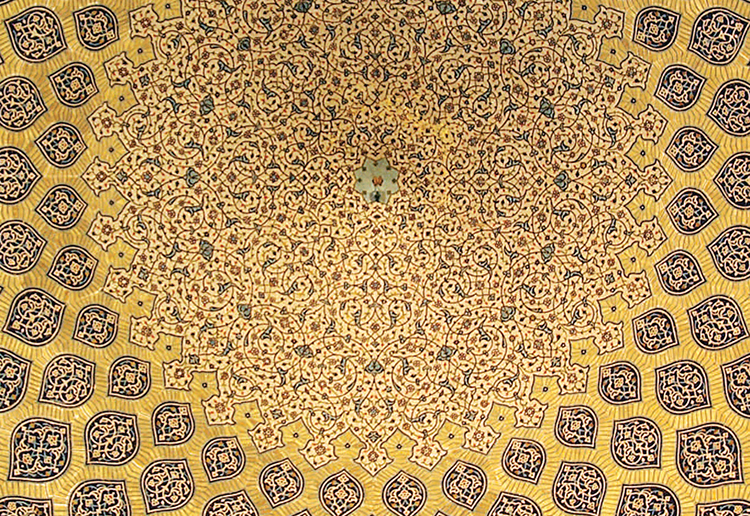
Desert and void. The Uncreated is waste and emptiness to the creature. Not even sand. Not even stone. Not even darkness and night. A burning wilderness would at least be “something.” It burns and is wild. But the Uncreated is no something. Waste. Emptiness. Total poverty of the Creator; yet from this poverty springs everything.1
Thomas Merton
Almost everything that has been written about spiritual life in the West is about what happens from the plane of pure being down into the planes of manifestation. Awakening to the peace and wholeness of the Higher Self, mindfulness, selfless service, or working with the archetypes and the energies of the Earth—all take place in the realms of existence.
But there is another esoteric science, a very different set of spiritual teachings that have to do with the hidden face of God, the invisible substance of the Absolute that is both here and not here. Because just as the Absolute is, the Absolute is not.
Mystical intelligence that touches into the void becomes an open window into the vast emptiness of the Absolute, has an important role to play in how the Absolute creates, transforms, and destroys its world. But there is no spiritual knowledge on the plane of non-being. There is not-knowing. One can’t explain how to work with nothingness, because it’s not a “how to.” How can you “do” something with nothing? How can you even find what does not exist?
But it is important to know that the nothingness is real. It is a very powerful dimension because the energy of the Absolute has not been dispersed yet; it hasn’t been scattered into fragments, refracted into form.
Consider how sunlight functions. Sunlight streams through the darkness of space where it is invisible. As soon as it hits the plane of manifestation the light refracts into the brilliance of form and color. It is only after light is reflected that it becomes visible, but at that same moment of reflection some quality of the light is lost. If one looks at the leaves of a tree, one is seeing the sunlight reflected from a beautiful form, but the sunlight itself has become diminished. It is no longer as pure—a quality of its essential nature is no longer present.
It is the same with energies of Absolute Truth. Once energy comes into the plane of manifestation it is not only dispersed but it is harder to work with. It is much denser. It moves more slowly. It has already become defined. Even a thought-form already belongs to the plane of manifestation. While our thoughts are easier to change than a building, it is still more difficult than working with energy before it has become constricted by form.
In nothingness, there is tremendous freedom because there are no restrictions—who or what is there to create any restriction?
Life needs human beings whose consciousness can work within the nothingness. Particularly, it needs the love and power that is there. Within the void is love in its completeness—love that is undifferentiated, unlimited, and very, very pure. Love is the substance of the universe, the substance of life. Love is the greatest power in creation. The energy of love spins the atoms, spins the world, spins the galaxies.
In the void, love starts to sing, and it sings its own song rather than the song you want it to sing. If you can let love do what it wants to do then it can take you somewhere else entirely, into the beyond of the beyond, into life’s deepest mystical mystery. Here, at the source of the Source is love’s deepest truth, which is also our truth.
It is the same with power. In the void, power has not yet been diminished by the structures of creation or the dynamics of human beings. There are no hierarchies or power dynamics, no abuse or misuse. Pure power has the potential to create, transform, and destroy anything and everything—in an instant.
For centuries, mystics have worked between the worlds, at the intersection of nothing and something, in service to the evolution of the whole. Working in nothingness gives us access to a dimension free from definitions and free from any form of corruption. And all our definitions belong to the past. If there is any hope for the future—if the future is going to be real—it must be free of the contamination that restricts what is and what will be with what has gone before.
Levels of Reality
In order to align our intelligence with the nothingness, we need to remember that we are made in the image of God; we are microcosm of the entire universe. This means that our consciousness has access to all levels of existence and non-existence.
We have forgotten how many levels of reality there are, and that each level has its own laws. For example, the law of cause and effect governs the physical plane. As Newton said, every action has an equal and opposite reaction. We see examples of this law all around us.
On the level of the Higher Self, or the Soul, there are different sets of laws. The Self is a plane of oneness, and oneness works differently from the physical world, which is a plane of multiplicity. In oneness, individuals are known by their unique true nature and yet are also one with all life.
While on the plane of the Self everything is revealed according to its true nature, on the plane of nothingness, everything is absorbed back into its very essence. Just as darkness absorbs light, nothingness absorbs and yet at the same times reveals the very essence of what is.
But the plane of nothingness is not separate, it is not “other.” Rather, it is an integral part of the whole. It might be distinct from the plane of the Self or Soul, but it is not separate from it.
When our intelligence knows itself to be part of an interrelated whole, life is free and dynamic, flowing from level to level. The experience of miracles is the phenomenon of a higher level of reality interceding or influencing another plane. Such experiences are not conditioned by effort; rather they are expressions of grace.
Today, we continually solidify the energy of life, demanding that life express itself through things we can see and feel and own. This fundamental materialism has taken a great toll on us as well as on every level of creation, denying both the reality of other dimensions and restricting how all dimensions—including the dimension of non-being—can work together.
This solidity has even crept into our spiritual traditions. We think of “enlightenment” as a place of perpetual rest—like being a passenger on a cruise ship, sea-breezes caressing us into eternity. Yes, there is great peace on the plane of the Self. But realization of the Self is not the end of the journey. Beyond the Self is what is not.
The Self is a fulcrum between these dimensions, a dynamic gateway between being and non-being. The intelligence of the Self knows that everything is present at each moment of time.
Life is filled with emptiness. And the emptiness is pulsating with love.
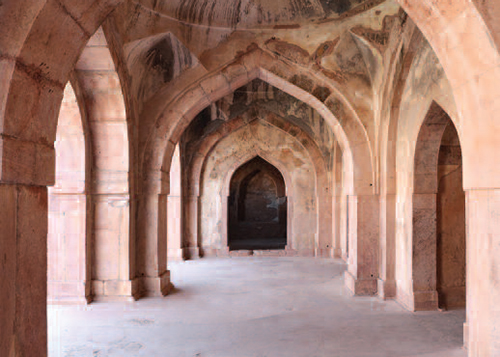
The Power of Attention
In order to work with nothingness, we need the right attitude, attention, and intention. We need the right intelligence. We need to remember that attention does not need something as an object. Rather, attention is a receptive state of being.
In Sufism, attention is subtly linked to intention, which is an attitude of mind, an attitude of being, which carries with it a whole mystical tradition of adab. Adab refers to “courtesy of behavior.” From a superficial view, adab might look like simple politeness or a prescribed way of acting. But in fact, adab is based on the relationship between the soul and God—the way the soul is before God. Over time, this fundamental inner relationship that includes humility, respect, devotion, and continual watchfulness becomes part of our daily pattern of behavior—our way of interacting with life, with each other, with the path, and with the Absolute.
Meditation can be a foundation for this kind of attention, but there is a danger to making what is a fundamental capacity of the Self a special “practice.” The contemporary Tibetan Buddhist Rinpoche Namkhai Norbu tells a story about a 13th-century Dzogchen master:2
The great Dzogchen master, Yungton Dorje Pal, was asked: “What meditation do you do?” And he replied: “What would I meditate on?”
So his questioner concluded: “In Dzogchen you don’t meditate, then?”
But Yungton Dorje Pal replied: “When am I ever distracted?”
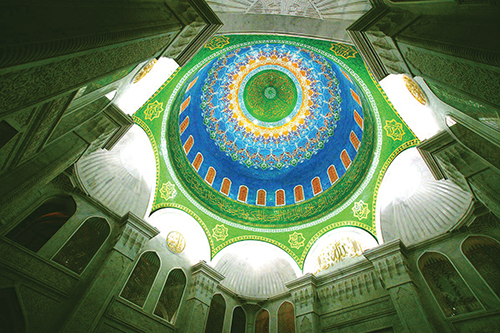
Attention has to do with the practice of witnessing, described in the Mundaka Upanishad through the story of the two birds sitting on a branch of a tree. One bird eats the sweet fruit of the tree while the other bird looks on, without eating. This mysterious passage describes the aspect of ourselves involved in life and the aspect that seems not to be—the part that simply watches. Spiritual practices like meditation help awaken this “witness,” what the Sufis call the shaheed.
Witnessing is not an abstraction from life, but rather a multi-dimensional participation, a way to be of service. At its deepest, this quality of attention participates in the remembrance of the Absolute on all levels. Ibn ‘Arabi calls the mystic “the pupil in the eye of humanity,”3 through which God sees His own world. Without human consciousness, especially the awakened intelligence of the heart, the Absolute is not known, does not know Itself. This is reflected in the primordial covenant, when the soul of the not-yet-created humanity was asked, “Am I not your Lord?” and they replied, “Yes we witness it.”4 We aspire to remember and live the soul’s covenant.
Witnessing encompasses both presence and absence, for it cannot take place solely from within creation. If the witness were solely in the created world, the witnessing would be veiled by creation. It would be like the bird focused only on the sweet fruit. Rather, part of the witness remains outside of creation—the second bird that “looks on.” From behind the veils of creation, it can see and know the Real throughout all levels of reality.
In Sufi esoteric science the different spiritual centers within the heart embrace different levels of reality, and these centers, or “chambers of the heart,” each carry a unique spiritual consciousness. Each center of consciousness witnesses a different level of reality, from the outer chamber, qalb, which awakens us to our longing for God, to the inner chamber of khafi, which witnesses the dark light of the primal nothingness of non-existence, and then beyond into the innermost chamber, which experiences only Absolute Truth.5 Witnessing is a way of remembering the Real, and reminding the Real of its own divinity, that it is “Lord.”
At certain times, this quality of inner and outer attention needs to become more active. Something in one’s life will call us to be awake in a new way. This call will be different for different people. It likely will not be what we expect, what we are hoping for, what we want. Something at work, something in an ordinary day, or a thought or hint of something … An insight in meditation, maybe even a scent in the air or a gust of wind across a field. Something in life has a need for one’s conscious attention—it might last a few seconds, or a week or even a year.
In these moments if one responds with the right attitude, the right intention, then one experiences an active intelligence that is both present and absent. One becomes a doorway. Something can be born into life that wasn’t there before; an aspect of the Absolute can come alive for the first time.
It is part of spiritual training to be present and watchful, prepared for these moments where the worlds come together. If one catches these moments when the levels of reality are aligned, when the doors of grace are opening, when all one has to do is pay attention and be willing to follow, then the whole of life—inner and outer—changes.
Such moments come in our individual lives as well as in our collective lives—times when forces in the inner and outer worlds are aligning to support change, moments that require our full watchfulness and attention. As Shakespeare writes in Julius Caesar,
There is a tide in the affairs of men,
Which, taken at the flood, leads on to fortune.
Omitted, all the voyage of their life
Is bound in shallows and in miseries.6
At this moment in our global history the tide in the affairs of men is turning. This turning,7 this evolutionary moment, needs our full attention. We can remember how to watch; we can remember how to catch these moments, how to see beneath the surface. Nothingness helps us be attentive. With one foot in nothingness, with one ear attuned to silence, we are infinitely watchful and undisturbed.
Ordinary Life
The ground of nothingness is ordinary life. “Chop wood, carry water” is a way of living that allows life to be itself and frees the different levels of reality from our spiritual projections, our expectations and disappointments.
The more one is absorbed into nothingness the more important it is to remain grounded in outer life. In fact much of the mundanity of a mystical path has a deep purpose. It is the immersion in ordinariness combined with the awareness of what is beyond the physical world that allows a certain key to be turned, a certain lock to be opened.
It is tremendously powerful to be here and there, in being and non-being both. This human capacity to become a nexus of the inner and outer, of non-being and being, of what is written and what is not yet written, is key to aligning the worlds and keeping life in balance. Life was made to function not as just the outer plane of reality, but as a multidimensional, interrelating reality. And there need to be those who know this secret.
Present in both the inner and outer world, one learns to serve the world, serve life, serve others without effort. This is a very careful balance. If one takes upon oneself the onerous responsibility of service, then the ego easily gets caught in it; the psyche gets encumbered by it. But being engaged in an ordinary life allows us to be of service without the burden of thinking we can solve the world’s or other people’s problems, which brings with it self-importance and, worse, spiritual self-importance.
On a true mystical path, one has lost so much. One is so lost. And at the same time, life becomes more alive, more dynamic. It has always been the emptiness at the center that allows things to happen. Lao Tzu, the ancient Taoist philosopher, understood the profound functionality of what is not there:
Thirty spokes share the wheel’s hub;
It is the center hole that makes it useful.
Shape clay into a vessel;
It is the space within that makes it useful.
Cut doors and windows for a room;
It is the holes that make it useful.
Therefore profit comes from what is there;
Usefulness from what is not there.8
Life is dying. Life needs the freedom that belongs to nothingness, to what is not yet defined. Then it can be sustained by the primal energy that comes through all the levels of creation, from the Source into every grain of sand. There is a way to allow nothingness to benefit humanity—to give humanity breathing space, because where you don’t exist you can relax. There is no struggle. Grace needs this space. And the whole of life needs what can be given only through grace.
We have so many images and stories about the relationship of emptiness and grace, though they too often sit on shelves in libraries nobody visits. This Zen koan tells of Subhuti, a disciple of the Buddha:9
One day, in a mood of sublime emptiness, Subhuti was resting underneath a tree when flowers began to fall about him. “We are praising you for your discourse on emptiness,” the gods whispered to Subhuti. “But I have not spoken of emptiness,” replied Subhuti. “You have not spoken of emptiness, we have not heard emptiness,” responded the gods. “This is the true emptiness.” The blossoms showered upon Subhuti as rain.
And Rumi said:
No more words.
In the name of this place we drink in with our breathing, stay quiet like a flower.
So the nightbirds will start singing.10
Through emptiness, the blossoms can fall like rain. Through silence, the song of the nightbirds rings out. In the nothingness, the heart of the world has space to spin, has silence to sing.♦
Notes
1 Thomas Merton, “Cables to the Ace,” Collected Poems of Thomas Merton (New York: New Directions, 1967).
2 Namkhai Norbu, ed. John Shane, The Crystal and the Way of Light: Sutra, Tantra, and Dzogchen (Ithaca, NY: Snow Lion Publications, 2000), 112.
3 “He [Man] stands to God as the pupil, which is the instrument of vision, to the eye; and for this reason he is named a Man. By means of him God beheld His creatures and had mercy on them.” Quoted by Bhatnagar, Dimensions of Classical Sufi Thought (Delhi: Motilal Banarsidass, 1984), 94. In this sense man’s coming into existence makes the process of creation complete. Meister Eckhart makes a similar statement, “the eye in which I see God is the same eye in which God sees me. My eye and God’s eye are one eye and one seeing, one knowing and one loving.” Robert J. Dobie, Logos and Revelation: Ibn ‘Arabi, Meister Eckhart, and Mystical Hermeneutics (Washington, DC: The Catholic University of America Press, 2010), 215.
4 Qur’an 7:172.
5 See Vaughan-Lee, “Chambers of the Heart,” Fragments of a Love Story (Point Reyes, CA: The Golden Sufi Center, 2011), 17–39.
6 Julius Caesar Act 4, scene 3, 218–221.
7 The Buddhist environmentalist Joanna Macy calls it “The Great Turning,” the shift from an industrial growth society to a life-sustaining civilization.
8 Lao Tzu, trans. Gia-Fu Feng and Jane English, Tao Te Ching (New York: Random House, Vintage Books 1972), 21.
9 Paul Reps and Nyogen Senzaki, Zen Flesh, Zen Bones: A Collection of Zen and Pre-Zen Writings (Boston: Tuttle Publishing, 1998), 53.
10 Jalal Al-Din Rumi, trans. Coleman Barks, Night and Sleep (Cambridge, MA: Yellow Moon Press, 1981).
Reprinted by permission from For Love of the Real: A Story of Life’s Mystical Secret by Llewellyn Vaughan-Lee, with Hilary Hart (Nov. 2015, The Golden Sufi Center: www.goldensufi.org)
From Parabola Volume 40, No. 3, “Intelligence,” Fall 2015. This issue is available to purchase here. If you have enjoyed this piece, consider subscribing.
Llewellyn Vaughan-Lee is a Sufi mystic and lineage holder in the Naqshbandiyya-Mujaddidiyya Sufi Order. He is the founder of The Golden Sufi Center and the author of several books including “Spiritual Ecology” and “Darkening of the Light.” For more information, please visit www.goldensufi.org
Hilary Hart is a teacher and author (Body of Wisdom: Women’s Spiritual Power and How It Serves, 2013); www.hilaryhart.org.
